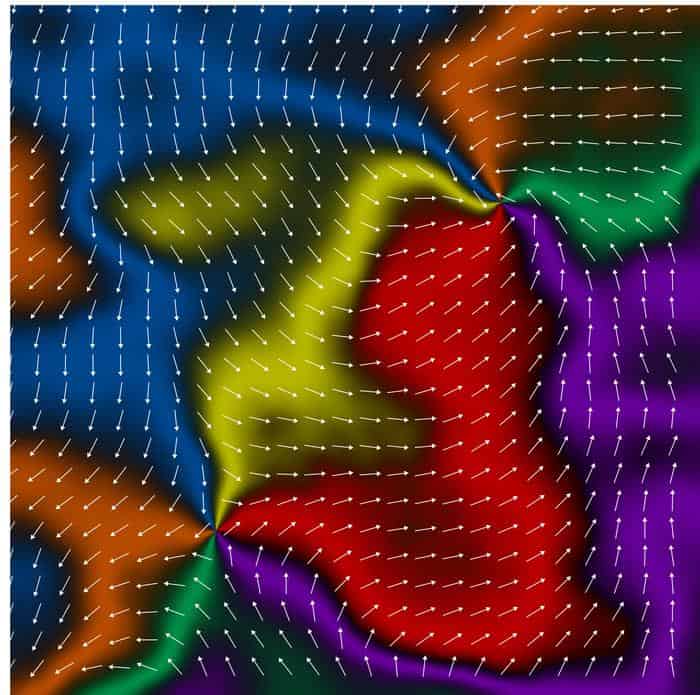A recently-discovered class of magnets called altermagnets has been imaged in detail for the first time thanks to a technique developed by physicists at the University of Nottingham’s School of Physics and Astronomy in the UK. The team exploited the unique properties of altermagnetism to map the magnetic domains in the altermagnet manganese telluride (MnTe) down to the nanoscale level, raising hopes that its unusual magnetic ordering could be controlled and exploited in technological applications.
In most magnetically-ordered materials, the spins of atoms (that is, their magnetic moments) have two options: they can line up parallel with each other, or antiparallel, alternating up and down. These arrangements arise from the exchange interaction between atoms, and lead to ferromagnetism and antiferromagnetism, respectively.
Altermagnets, which were discovered in 2024, are different. While their neighbouring spins are antiparallel, like an antiferromagnet, the atoms hosting these spins are rotated relative to their neighbours. This means that they combine some properties from both types of conventional magnetism. For example, the up, down, up ordering of their spins leads to a net magnetization of zero because – as in antiferromagnets – the spins essentially cancel each other out. However, their spin splitting is non-relativistic, as in ferromagnets.
